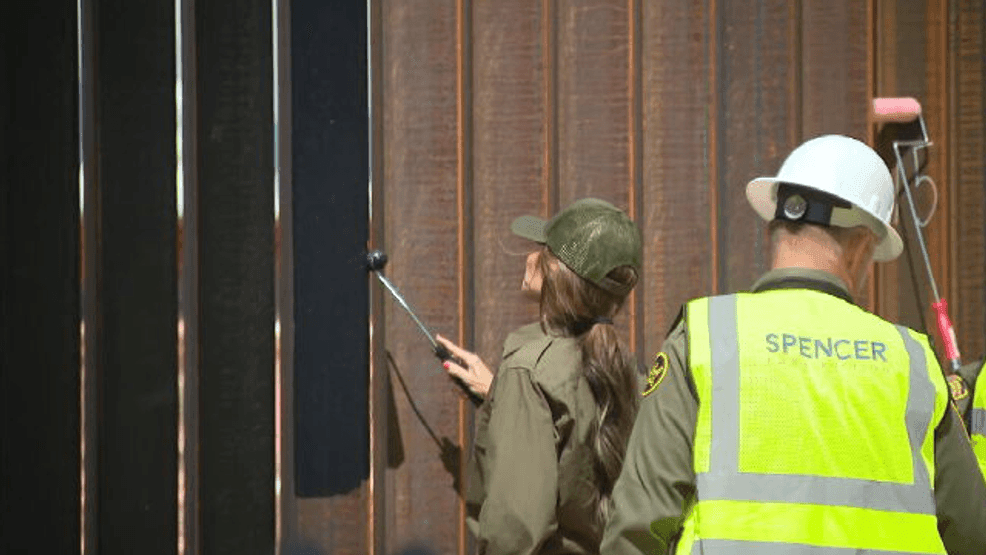TEXAS BORDER — The border wall is set to receive a new look as it undergoes expansion: a fresh coat of black paint.
Department of Homeland Security Secretary Kristi Noem announced the change, stating it was made at the request of President Donald Trump.
Noem said the black paint is intended to protect the wall from rust and increase its temperature in the sun, making it more difficult to climb.
We are also going to be painting it black. That is specifically at the request of the President, who understands that in the hot temperatures down here, when something is painted black, it gets even warmer, and it will make it even harder for people to climb. So we are going to be painting the entire southern border wall black to make sure that we encourage individuals to not come into our country illegally, to not break our federal laws, but that they will abide and come to our country the right way, so that they can stay and have the opportunity to become United States citizens and pursue the American dream.
Border Patrol Chief Mike Banks also commented on the new developments.
Once we get the infrastructure up, we’ll also see lighting go up, camera systems go up, ground sensing technology as well. And then, as the Secretary said, we’re going to paint it black for two reasons. One, the black is going to protect the wall from rusting, and two, black gets hotter, makes it more difficult to climb.
However, details about the project’s cost, who will undertake the painting, and whether it is included in the recent Congressional spending package remain unclear. The timeline for the painting has not been disclosed.
Critics question the effectiveness of the paint in deterring illegal immigration, noting that individuals often use ladders and gloves to scale the wall or cross at night when the sun is not a factor.
New border wall waiver
A new section of the border wall in Texas is being expedited.
DHS has issued a waiver to accelerate construction, bypassing some legal requirements.
This marks the seventh waiver for border barrier projects.
Five miles of wall are planned for Starr and Hidalgo counties in Texas, with about 100 miles of wall already in various stages of construction and planning.
Conservation groups have sued the Trump administration over these waivers in Arizona, arguing that the wall obstructs animal migration. Similar waivers have been used by other administrations, including the Biden administration, and have faced opposition from environmental groups. Despite this, construction and waivers are expected to continue with new congressional funding.
Immigration judge requirements are changing
The Department of Justice is adjusting its requirements for temporary immigration judges amid a significant turnover.
Over 100 immigration judges have left or been dismissed.
Now, the Department of Justice filed a rule in the Federal Register establishing that temporary immigration judges will no longer need to have experience in immigration law.
Previously, temporary immigration judges had to be former appellate immigration judges, EOIR administrative law judges, or attorneys with more than 10 years of experience in immigration law.
The DOJ says in that filing that immigration law experience is not always a strong predictor of success as an immigration judge.
The change aims to address a backlog of 3.7 million immigration cases.
